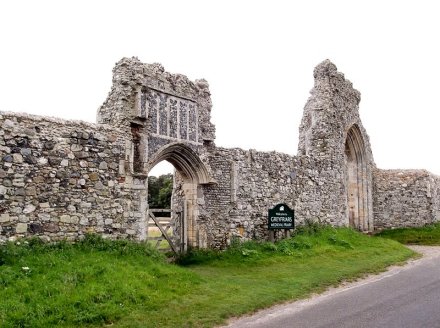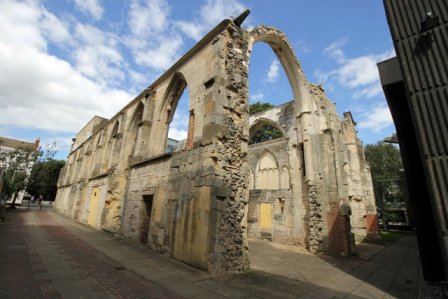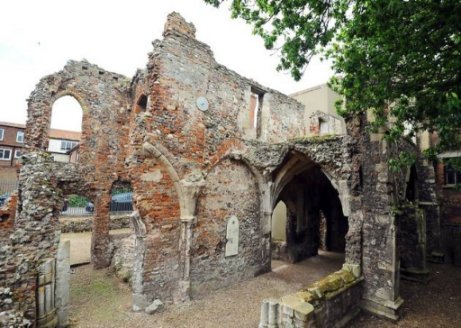Once Canterbury and London settled, the Franciscans headed for the university towns: first Oxford, then Cambridge, where for a while they shared a building with the town lock-up. These towns would be good locations for the recruitment of young, intelligent men. Although Francis himself was not a promoter of the academic life, it was becoming increasingly important to the order.
Friaries continued to be established, particularly in the cathedral towns, and by 1230 another 12 had been established, and by 1255 the number had increased to nearly fifty. At first, these would have consisted of ramshackle wooden buildings, little better than huts, but over the next few years donations increased and substantial stone-built friaries began to appear.
How welcome were the Franciscans? The citizens of the towns were glad to have them. They concerned themselves with the sick and the poor. As time went by, the preaching skills of the Franciscans outdid the local parish priest. The friars began hearing confessions and undertaking burials. Burials were an important source of income for local churches, as were gifts made to absolve sins, so it is easy to see why many of the secular clergy were not happy with their presence. The more traditional monastic orders were not always happy either. There was a fear that novices would turn away from the monasteries and sign up with the Franciscans instead. They were also concerned that people would notice that their lifestyles were somewhat more lavish than those of the friars.
Along came the dissolution, and the friaries were closed, though Queen Mary did briefly bring back some observant friars. It seems that by 1538 the Franciscan order was in serious decline. The properties were increasingly derelict and the number of friars in the country had fallen to around 600. Some ordained friars were able to acquire livings; elderly friars were given small pensions.
Many of the monasteries were worth a good deal of money. Most of the friaries were poverty-stricken, as Francis had wanted them to be. However, most of them were sited near or within towns, and so the land itself had value. Sadly, this is why there are very few remains of friaries, unlike, say, the Cistercian monasteries, in remote country locations. Here are some.

King's Lynn, Norfolk. The tower was left in situ as reference point for passing shipping.

Greyfriars Church, Reading, the only Franciscan church still in use, though much altered.

Remains of the Greyfriars, Dunwich, Suffolk.

Remains of Gloucester Greyfriars.

Remains of Greyfriars, Great Yarmouth

The chancel of a Franciscan friary in Chichester. After the dissolution it was used as the guildhall for the city; it is now a museum.
So was that the end of the Franciscans in Britain? The English province still existed, but was based at Douai, in France. A house of Franciscan women - Poor Clares - was established at Gravelines. Some friars slipped into England from Douai to support Catholics, but it was a risky business. Some were supported by embassies. A major blow was the closure of the house at Douai at the time of the French revolution. In 1795 the Poor Clares at Gravelines were sent back to England
In 1829 the Catholic Emancipation act was passed, though not without difficulty. The Friars gradually returned, and small communities were established.
In 1894 an Anglican clergyman is a poor district of London set up a small group called 'The Society of Divine Compassion', following the principles set down by Francis. Anglican Franciscanism had been born: as of today, there are twelve Anglican friaries in England.
Back to page 1 Home page - explore the site